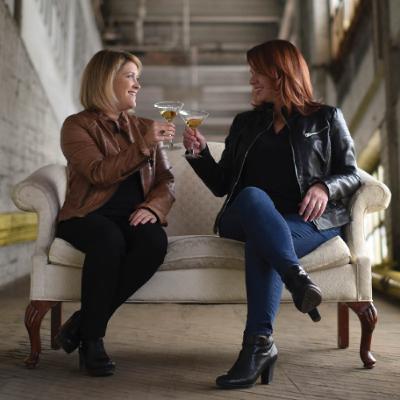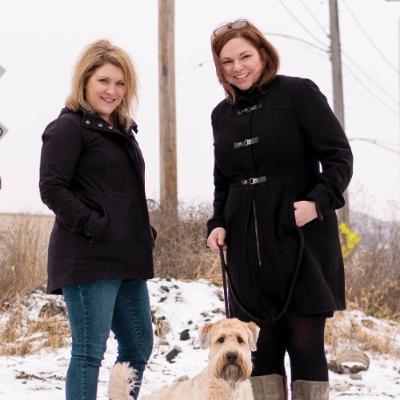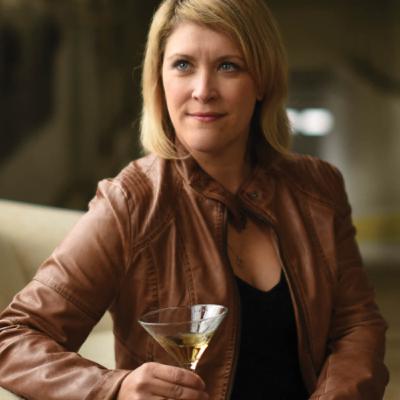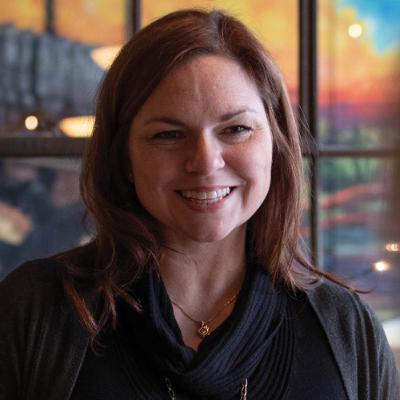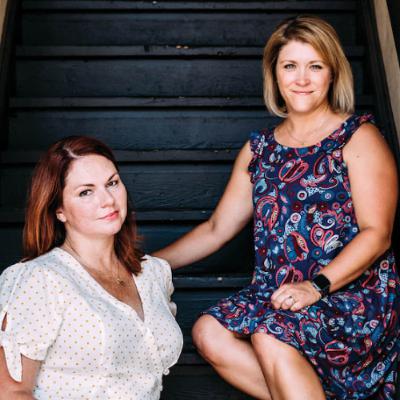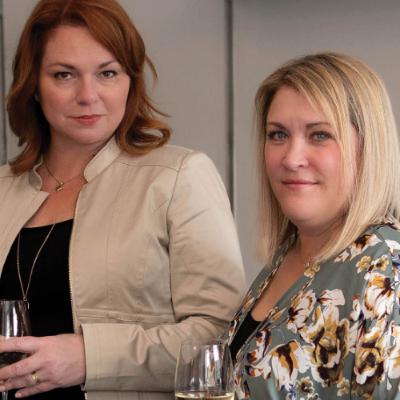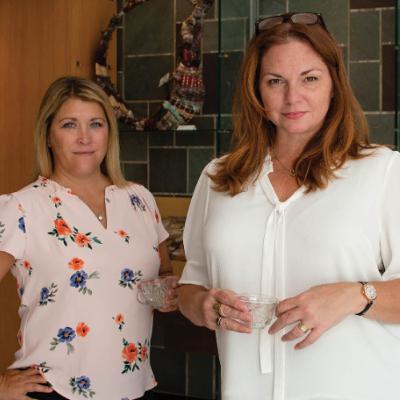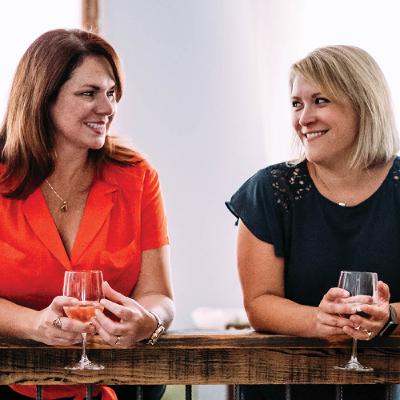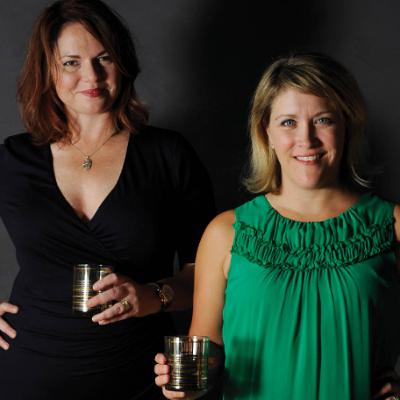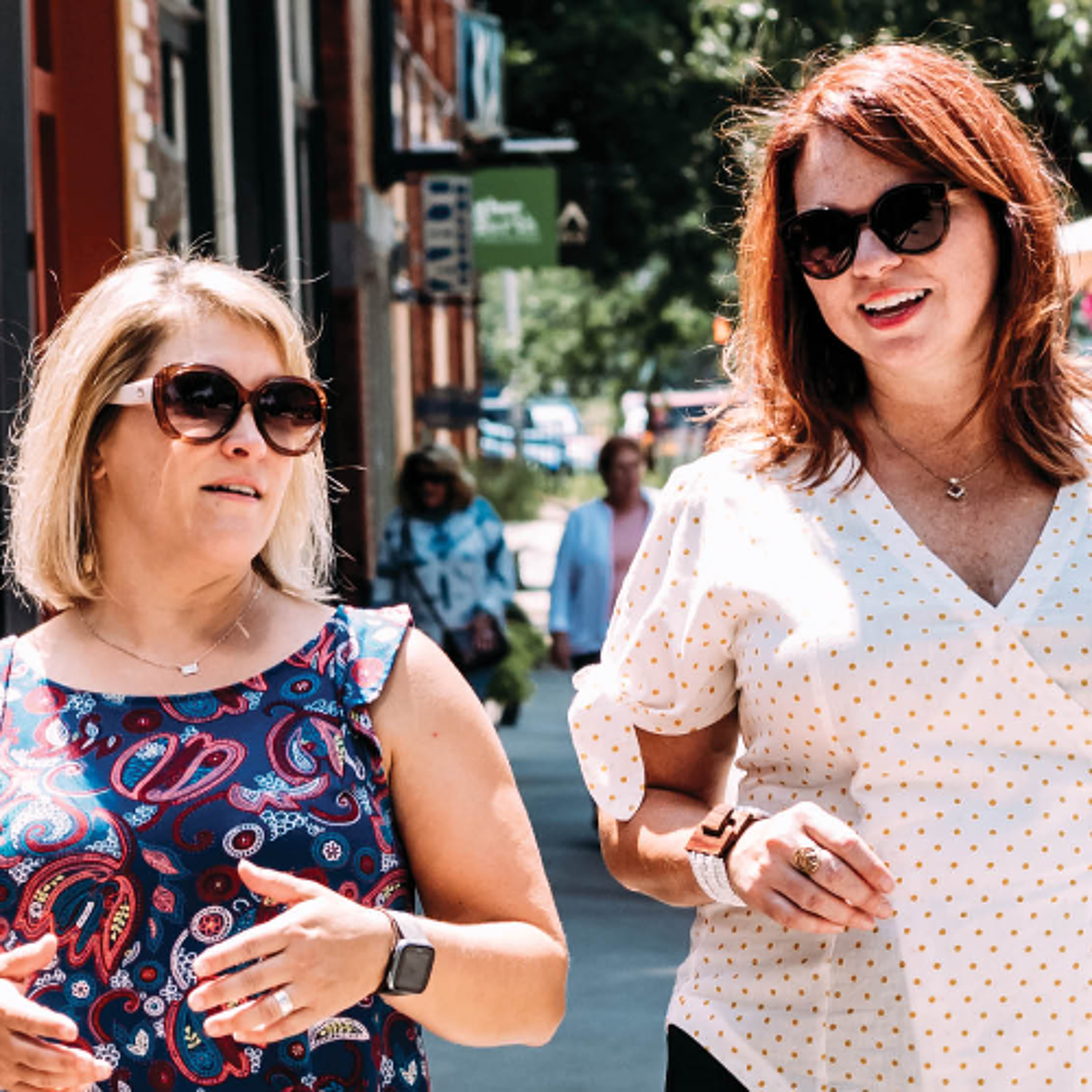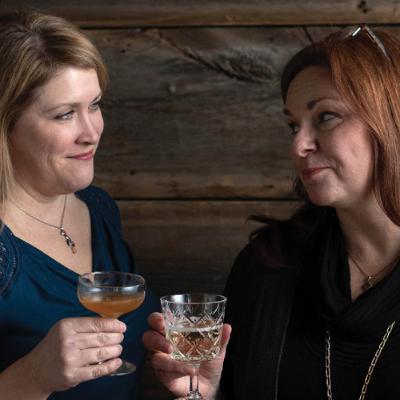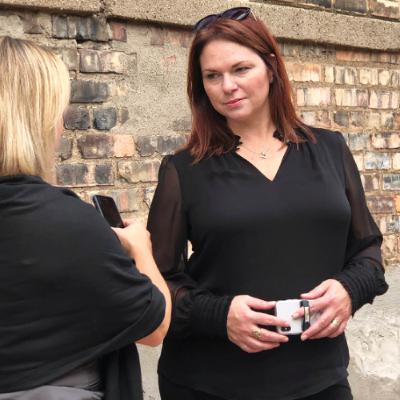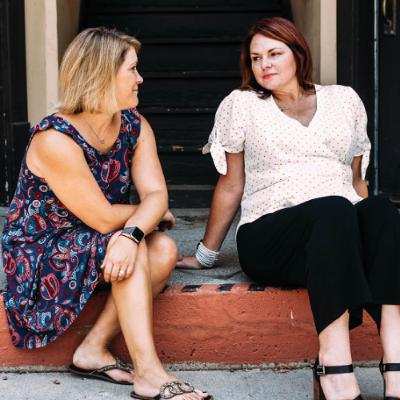Discover The Speak Easy Podcast
The Speak Easy Podcast

 The Speak Easy Podcast
The Speak Easy Podcast
Author: Jen Estill and Karen Stefl — creative studio entrepreneurs, brand and video experts, boss ladies, moms
Subscribed: 33Played: 998Subscribe
Share
© All rights reserved
Description
Hi. Jen Estill and Karen Stefl here. In The Speak Easy Podcast, we share years of expertise in marketing, branding, video production, strategy—not to mention management, employee development, mentoring, sales, creativity, maintaining life balance, managing money, and.. you get the idea. It takes a lot to keep a couple of creative studios thriving.
We developed this podcast after years of "how do you..." boss lady conversations. It was clear that if we were both in such similar places with regard to business growth, and personal growth, and work/life/motherhood/bossland balance, then other women may be, too. We'd been sharing confessions over cocktails for quite a while—solving problems, asking for advice, and whispering the secret fears and disappointments that successful women are never supposed to have. (You've had those, right? It's not just us?)
Thus, Speak Easy was born. Our goal and our promise is to speak with honesty about the challenges that experienced women in the creative industry face. To create a community where we can support one another and abandon the mantra that we put on a good face and make it look like we have it all together, even when we don't. You can expect honesty, complete vulnerability and even a good laugh.
And cocktails. You can expect cocktails.
We developed this podcast after years of "how do you..." boss lady conversations. It was clear that if we were both in such similar places with regard to business growth, and personal growth, and work/life/motherhood/bossland balance, then other women may be, too. We'd been sharing confessions over cocktails for quite a while—solving problems, asking for advice, and whispering the secret fears and disappointments that successful women are never supposed to have. (You've had those, right? It's not just us?)
Thus, Speak Easy was born. Our goal and our promise is to speak with honesty about the challenges that experienced women in the creative industry face. To create a community where we can support one another and abandon the mantra that we put on a good face and make it look like we have it all together, even when we don't. You can expect honesty, complete vulnerability and even a good laugh.
And cocktails. You can expect cocktails.
238 Episodes
Reverse
In this episode, we break down what the 2% looks like in our respective crafts and why it matters more than you might think. This extra effort is often what differentiates premium work and justifies premium pricing — it's the invisible layer that turns "thanks" into "wow." We explore how to protect that 2% margin in your workflow and culture, why it becomes part of your brand expectation over time, and how it compounds into longevity for both your deliverables and your business. We also talk about the difference between extra polish and scope creep, because knowing where to stop is part of mastery. The 2% rule is what separates seasoned professionals from those just checking boxes — and it's the most profitable investment you can make in your reputation.
There's a special kind of frustration that comes when you realize you're working harder on someone else's project than they are. The meetings where they're distracted, the feedback that arrives three weeks late, the sudden flood of opinions after months of silence — these aren't just annoying inconveniences. They're symptoms of a deeper problem that impacts everything from creative quality to team morale to actual ROI.
In this episode, we explore the uncomfortable reality of working with disengaged clients and why it matters more than you might think. We break down the root causes — from burnout and fragmentation to simple lack of understanding about what good collaboration requires — and examine how disengagement creates a ripple effect that damages the work, the process, and the people involved. But this isn't just about venting frustrations. Tune in as we share practical approaches for reigniting client engagement, from reframing conversations around outcomes to establishing clear decision-makers and structured review phases, and most importantly, how to protect your team's energy and the project's integrity.
When you're working with an expert production team, you should expect them to ask you hard questions — particularly upfront in the planning stages. Those difficult questions aren't obstacles; they're what lead to a better final product. But knowing what to look for in a production partner and how to navigate the process can make all the difference between simply checking a box and creating work that truly resonates.
In this episode, Karen breaks down how to approach video production with clarity and purpose. Drawing insights from Render Studios' approach to partnering with clients, we explore the importance of starting with strategy first, understanding the different skill sets involved in production, and building trust throughout the process. Tune in as we demystify the production process and how to find the right creative partner to maximize the value of your investment.
In a creative slump? Hit the road - seriously. New places and new experiences stimulate your brain. They expose you to different ways of thinking, new cultures, and alternative approaches to solving problems. In this episode, we dig into why it's important to leave your zip code, both for personal growth and for your community's reputation. We share stories about how traveling can spark creativity, provide cultural awareness, and help you see the bigger picture beyond your usual context. But there's another layer: when you leave, you become an evangelist for where you're from. No one can choose your town if they don't know about it. By getting out and sharing your story, you're putting your community on the map. Tune in as we make the case that sometimes the best creative strategy is a road trip.
Think about how different perspectives create magic. The best friend groups, book clubs, and communities outside of work aren’t just “life hacks” or productivity tools — but what they offer is far more powerful. They support you, balance you, and push you to grow. The real value of shared-interest communities isn’t in everyone nodding along; it’s in what happens when different minds meet. You spark new ideas, make meaningful relationships, and create spaces for healthy debate. In this episode, we share stories from our own book clubs and explore why finding your crew — the people who challenge and champion you — is one of the best investments you can make in yourself.
If you've ever wondered whether investing in brand awareness is actually worth it, this episode is for you. We dig into why brand awareness gets dismissed as too "soft" to measure, how to actually track it in meaningful ways, and why prioritizing it can transform your marketing results. The reality is simple: customers acquired through product marketing leave the moment a better deal comes along. Customers who connect with your brand stick around, advocate for you, and drive long-term growth that compounds over time. We share practical strategies for building awareness that matters and explain why this underrated metric deserves more of your attention and budget.
Sometimes the best lessons come from losing something you thought you needed. When Karen lost her Facebook page and realized it wasn't the end of the world, it sparked a bigger conversation about how we approach social media strategy. The truth is, most of us are maintaining profiles on platforms that aren't moving the needle while scrambling to keep up with whatever trendy app just launched.
In this episode, we get real about multi-channel social media strategy and why quality beats quantity every single time. We explore why different audiences live on different platforms, and why expecting one channel to do everything for everyone is a recipe for mediocre results. This isn't about abandoning social media — it's about using it strategically, focusing your energy where it actually matters, and showing up consistently in the places where your audience is already paying attention. Sometimes letting go is the most strategic move you can make.
Hashtags:
#creativity #socialmedia #socialmediastrategy #smallbusiness #creativeindustry #podcast #midwestpodcast #michiganpodcast #workpodcast #marketing #videography #career #cocktail
If you’re like us, some days your desk looks like a command center. Other days, it looks like a scrap pile of to-do lists, personal reminders, and ideas in progress. The reality is, most of us don't have a perfect system for prioritization — and that's especially true when we're overwhelmed, which is ironically when we need one most.
In this candid episode, we compare notes on our different approaches to staying organized, from digital versus paper systems to the power of setting tomorrow's priorities before you go to bed tonight. Tune in as we sort through organizational struggles, share what's working (and what isn't), and admit that sometimes we don't have it all figured out — but we're learning as we go.
Video marketing isn't what it used to be — and that's both exciting and overwhelming. Between short-form content, interactive features, immersive experiences, and personalized feeds, the landscape is evolving at breakneck speed. But here's the thing: tracking video trends isn't about keeping up with every shiny new feature. It's about staying strategic and knowing which tools actually serve your brand's goals.
In this episode, Karen breaks down the current state of video marketing, from foundational content that builds trust over time to disposable content designed for immediate impact. Whether you're just getting started with video or looking to refine your strategy, this episode gives you the framework to make smarter decisions about where to invest your time and budget in an ever-changing digital landscape.
Every business has budget constraints, but here's what we've learned: cheap and affordable aren't the same thing. Cheap is about paying as little as possible; affordable is about getting the most value for the right price. One leaves you wanting more, the other leaves you satisfied with smart trade-offs that actually move your business forward.
In this episode, we break down how to spot the warning signs of "cheap" and share practical ways to identify affordable options in the creative industry. We explore why expertise often equals affordability, how good planning saves money in the long run, and what to look for in partners who understand your business goals. From understanding the hidden costs of cutting corners to making smart investments in creative problem solving, we give you a framework for budget decisions that actually serve your long-term success.
We've all seen internet trolls who jump straight to outrage without understanding the full story. But here's the uncomfortable truth: We all do this sometimes. In our everyday work and relationships, we jump to conclusions, assign motives, or make decisions based on half the story. It's human nature to want to find an explanation and solve problems quickly, but that instinct can backfire spectacularly.
In this episode, we dig into why our brains are so quick to fill in the gaps with assumptions — often wrong ones. Sharing real examples from our work-lives, we explore what's really happening when we assume the worst and talk about practical ways to slow down, ask better questions, and let curiosity lead instead of assumptions. Because when you take the time to get the full picture, you'll find better outcomes every time.
Brand marketing vs. performance marketing. It's not about picking sides — it's about understanding the dance. Performance marketing drives the clicks and the sales, but brand marketing? That's the reason anyone cares in the first place.
Here's what most people miss: these two approaches work better together than apart. Drawing insights from Nielsen research showing that 71% of people say they’re more likely to buy from a brand they recognize, we explore how brand marketing creates the conditions where your performance marketing can actually work. Tune in as we break down the difference between transactional and relational marketing, why consistent storytelling matters more than you think, and how values-driven messaging builds the kind of loyalty that turns into long-term business growth.
Here's what we know: People don't like surprises, especially unpleasant ones, and when information is missing, they'll fill in the gaps — rarely with generous assumptions. We break down why proactive communication with clients, your team, and even in your personal life feels harder than it should be, then share strategies for getting ahead of the narrative. From understanding why we avoid these conversations (spoiler: we assume people know more than they do) to crafting that perfectly timed heads-up email, we explore how transparent communication builds trust and prevents those awkward moments when everyone's caught off guard. It's not about having everything perfect; it's about communicating with intention before situations spiral out of control.
If you've ever felt like you need to have it all together before you can lead effectively, this episode is for you. No judgment here — we've all been there! In this candid conversation, we're sharing our own messy truths, from Jen's permanently grimy oven and abandoned Christmas card habit to Karen's perfectionism paralysis and lone wolf tendencies.
This isn't just therapeutic oversharing — there's strategic value in recognizing where you fall short. When you stop apologizing for things that make you who you are and understand that your personal standards don't apply to everyone else, you free up mental energy for what actually matters. We explore how self-awareness translates to better leadership and more authentic connections. It's about working with your natural tendencies rather than against them and building systems that account for your actual human limitations. Because people don't follow perfect leaders — they follow authentic ones.
If you’ve ever launched a website or video and walked away, this one’s for you. No worries, we’re not judging! It’s a common trap to fall into, and when you ignore it, it quickly becomes a pain to update. But in today’s world, where your brand story is always in motion, marketing needs to be treated as an ongoing, strategic effort. In this episode, we’re making the case for retainer-style budgets and maintenance models that reflect how content actually works: continuously, iteratively, and in partnership.
We explore how consistent investment leads to better outcomes, more efficient use of time and resources, and greater flexibility when the unexpected happens. Planning for ongoing care keeps your tools from becoming outdated, your messaging fresh, and your brand infrastructure responsive. It’s not just about having a polished launch — it’s about keeping things healthy, aligned, and ready for what’s next.
Color isn’t just a finishing touch — it’s a strategic tool that influences perception, emotion, and behavior. In marketing and branding, it’s one of the first things people notice and one of the most powerful ways to communicate without saying a word. But great color doesn’t happen by accident. It takes intention, skill, and an understanding of how color really works across mediums.
In this episode, we share real-life client stories, break down color theory, and explore how things like lighting, wardrobe, and even shadows can influence your final product. Whether you’re building a brand, producing content, or just trying to make your stuff look better, understanding color helps you get the most out of your creative investment.
In our latest episode, we talk about why social media ads might not be delivering, when they can be effective (hint: brand-building > promotion), and why it’s critical to stop thinking of social media as your only marketing plan. We also challenge you to consider how you’d communicate your message if social media didn’t exist at all. From Super Bowl spots to smart, scrappy strategies — this one’s full of tough love and practical insight.
Every brand has its own unique challenges — but not every brand should be approached the same way. In this episode, Jen shares four brand categories she and her team at Redhead work with most often: corporate, place-based, boutique, and entrepreneurial. From the layers of stakeholder input in corporate branding to the emotional nuance of placemaking, we break down how each type calls for a tailored approach to strategy, voice, and visual identity.
We talk about how understanding your brand’s category can help you choose the right creative partner, avoid costly missteps, and ultimately build something that resonates with the people who matter most — whether that’s leadership, customers, peers, or influencers. Inspired by Redhead’s blog post “The 4 Types of Brands We Build (and Why the Distinction Matters)”, this episode is a must-listen for anyone navigating the world of brand strategy or rebranding.
For more on this topic, read the blog post here: https://redhead.studio/blog/4-types-brands-we-build-and-why-distinction-matters
No one likes a boss breathing down their neck — but when you're the one in charge, knowing how much oversight is too much can be tricky. In this episode, we dig into the blurry line between healthy control and full-blown micromanagement. From trust issues to outcome-based leadership, we explore how leaders can maintain structure and accountability without disempowering their team.
Drawing on insights from Harvard Business Review's “The Anxious Micromanager,” we look at how anxiety and lack of preparation often fuel micromanaging behaviors — and what you can do instead. Whether you're a seasoned leader or just stepping into a management role, this episode offers a thoughtful and practical take on how to lead without smothering.
Read "The Anxious Micromanager" here: https://hbr.org/2023/09/the-anxious-micromanager
#growth #micromanging #lettinggo #smallbusiness #creativeindustry #podcast #midwestpodcast #michiganpodcast #workpodcast #marketing #videography #career #cocktail
As entrepreneurs, creatives, and business leaders, we’re constantly making decisions — about strategies, budgets, and even where to focus our energy. But how often do we pause to ask: "Do I need this, or do I just want it?" In a world filled with tempting new tools, trends, and shiny distractions, knowing the difference can be the key to growth — or the reason we stay stuck.
In this episode, we put that question to the test with a mix of lighthearted and thought-provoking scenarios. From the practical to the absurd, we explore the gray areas of what truly counts as a necessity. Tune in for an entertaining and insightful conversation that just might change how you prioritize what really matters.


